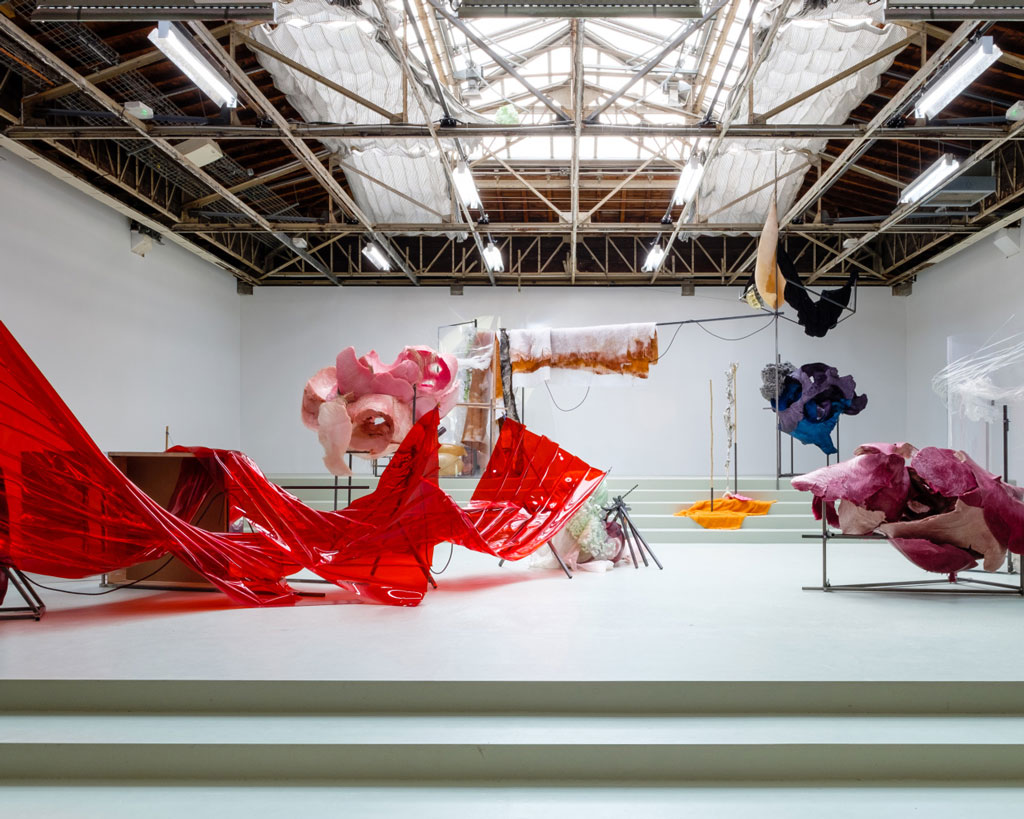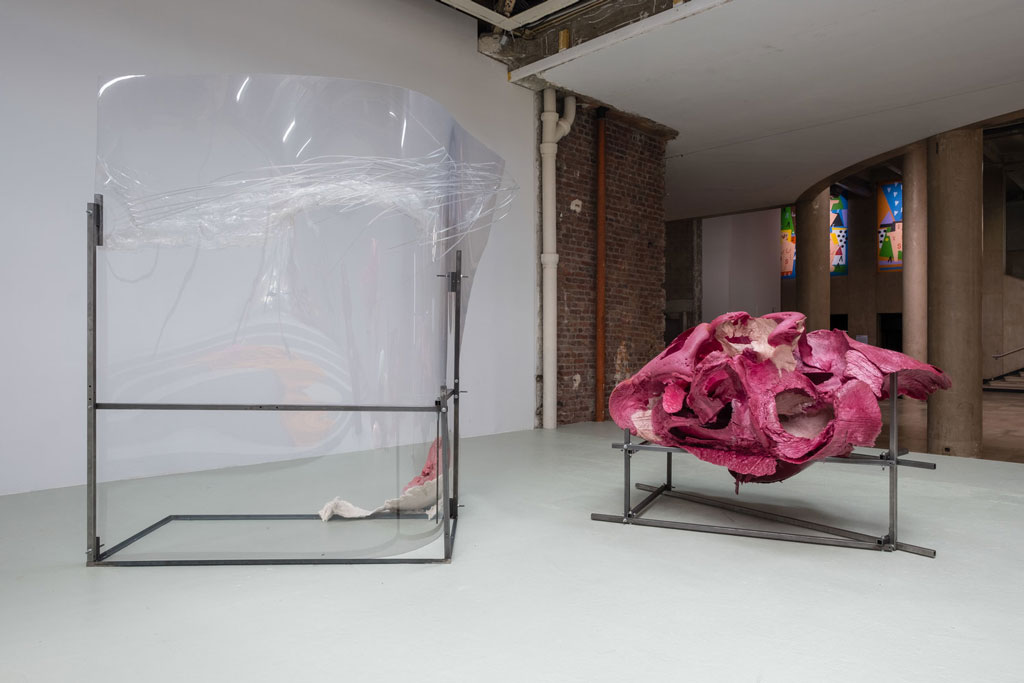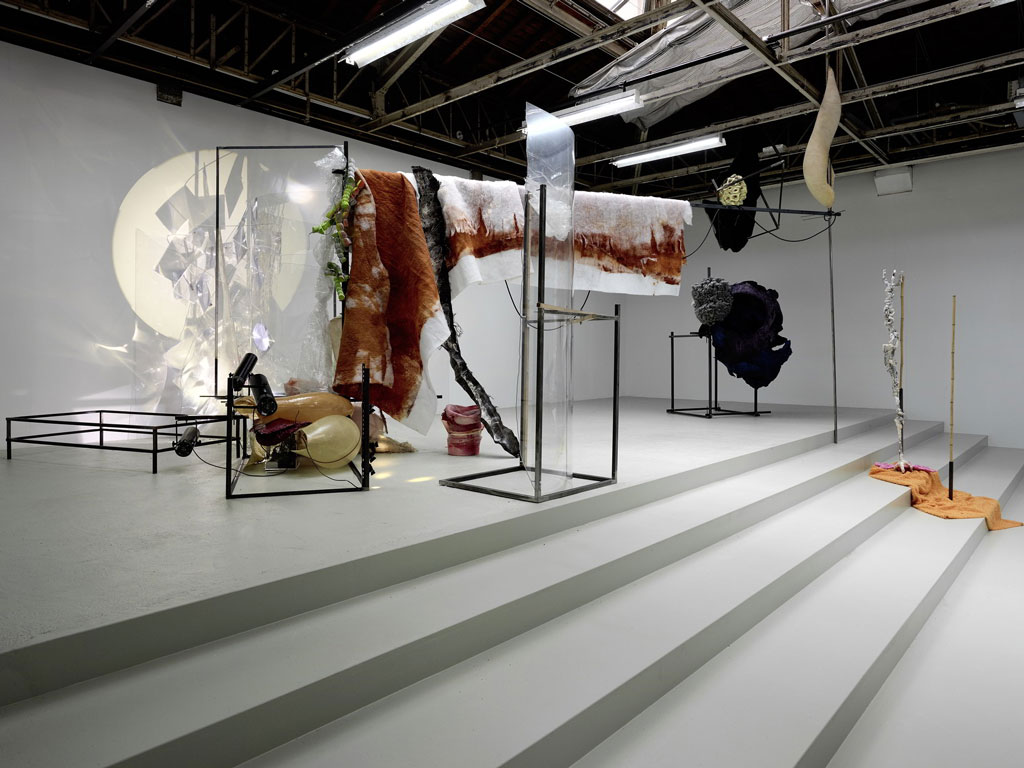ART-PRESENTATION: Daiga Grantina-What Eats Around Itself
 In her artistic practice, Daiga Grantina creates large-scale sculptural assemblages that emulate the natural world, often resembling terrariums and vegetation. Her labored configurations employ synthetic materials and incorporate conflicting physical qualities: soft and hard, transparent and opaque, mobile and static, strong and weak.
In her artistic practice, Daiga Grantina creates large-scale sculptural assemblages that emulate the natural world, often resembling terrariums and vegetation. Her labored configurations employ synthetic materials and incorporate conflicting physical qualities: soft and hard, transparent and opaque, mobile and static, strong and weak.
By Efi Michalarou
Photo: New Museum Archive
“What Eats Around Itself” is Daiga Grantina’s first institutional solo exhibition in the USA. The title references the dynamic growth of lichen, a composite organism that results from the symbiotic relationship between fungi and algae. Grantina draws inspiration from lichen’s many adaptive qualities, like coexistence and self-replication, in developing her material processes. She also references the lyricism of poet Rainer Maria Rilke, particularly his abstract comparisons of rose petals to eyelids; Rilke imagines the opening of a rose as a swirl of self-generating eyes, one bringing the next to life. For her New Museum presentation, Grantina premieres a new, site-specific sculptural installation that interweaves cast silicone with paint and fabric. Suspended from industrial fixtures in the ceiling and clinging to the gallery walls and floor, this work mimics the growth of lichen, which typically develops into a crusty, leaflike, or branching formation on rocks, trees, and other surfaces. The work’s flexible, amorphous structures appear to be undergoing either construction or decomposition, much as lichen reproduces and consumes its own biological matter.
Daiga Grantina was born 1985 in Latvia but has lived most of her life in Germany and Paris. In Germany, she studied art at a science-focused high school, where she came “into contact with non-categorical pedagogy”. Many of Grantina’s works resemble plant matter, both in materiality and in their form. For Grantina, “plant is medium”. Just as her sculptures utilize screens and moving imagery to express the temporality of film, she draws great inspiration from the natural evolution of plants. She explains, “They reach from almost animal to almost stone, like coral… we can see the invisible world through them. It mediates between the soil and our body as food and air, the invisible world”. The tensions between autonomy and stasis, hard and soft, growth and gravity are an integral part of her work. As part of a collaborative artist association called “Doc” Daiga is able to experiment within a multitude of planes when it comes to her own practice.
Info: Curator: Helga Christoffersen, New Museum, 235 Bowery, New York, Duration: 21/1-17/5/20, Days & Hours: Tue-Wed & Fri-Sun 11:00-18:00, Thu 11:00-21:00, www.newmuseum.org




